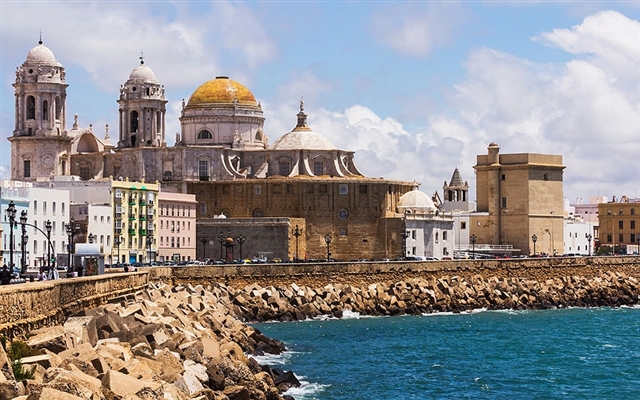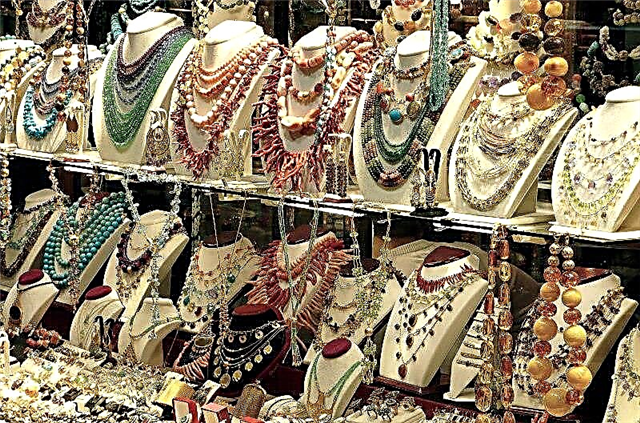Address: Italy, Florence
Start of construction: 1345 year
Completion of construction: 1345 year
Width: 32 m
Coordinates: 43 ° 46'05.2 "N 11 ° 15'11.7" E
Content:
Short description
Almost every city on our planet has its own "visiting card" (an ancient landmark, an ultramodern building, a monument of history, architecture, etc.), which is first of all shown to all guests.

Bird's eye view of the Ponte Vecchio bridge
In Florence, there are quite a few such "business cards" and it is extremely difficult to choose the main one. However, many guidebooks to the "blooming city" say that the Uffizi Gallery, the Cathedral and the Ponte Vecchio will be of the greatest interest to all tourists without exception. They are depicted on souvenirs, their photos have appeared more than once in the most authoritative and popular travel magazines. To be very precise, the story about the most interesting places in romantic Florence should begin with a description and history of these three sights. In this article, we will talk about the amazing Ponte Vecchio, built in the style of the luxurious Renaissance and included in the list of the most beautiful bridges in the world.
The Ponte Vecchio bridge connects the two parts of the city on opposite sides of the Arno River... It is located very close to the legendary Uffizi Gallery: professional photographers take stunning pictures of the ancient bridge from its windows. Despite its "considerable age", Ponte Vecchio is not a "dead landmark", but still functions. Moreover, from sunrise until late at night, it is packed with tourists, merchants and police officers who keep order on one of the main "business cards" of Florence.

View of the bridge from the facade of the Uffizi Gallery
Ponte Vecchio: the construction of the bridge and its history
The Florentine Bridge (at the moment there are 10 of them in the flourishing city!) In the form in which numerous guests of the “second city after Rome” can see it now, was built back in 1345! The name of the architect has even survived to this day, thanks to whom the Ponte Vecchio appeared in Florence. The ingenious plan of a beautiful bridge with three massive stone arches, distinguished by its reliability and durability, was developed by Neri di Fiorovanti.
Speaking of the place where the Ponte Vecchio still stands today, one cannot fail to mention that long before its appearance, at different intervals there were three more bridges! The first bridge, according to the assumption of historians and archaeologists, was built back in the days when the population of Florence consisted mainly of veterans of Rome. Much more is known about the second and third bridges: in the ancient chronicles it is said that the second crossing of the Arno River for some unknown reason collapsed in 1117, and the third could not withstand the flood that happened in Florence in 1333 ...

View of the bridge from the embankment of the Arno River
The new bridge was vital for the Florentines, therefore, 12 years later, the Ponte Vecchio was built, which has remained unchanged to this day. Such durability of the structure is explained by the competent calculations of the architect and strong building materials that were used in its construction. During World War II, almost all of Florence's bridges were blown up by the retreating fascists in panic. Almost everything ... Only the famous Ponte Vecchio survived. Moreover, the magnificent bridge over the Arno owes its safety to… .Adolf Hitler. Even the most terrible tyrant in the entire history of human existence was unable to destroy the creation of Neri di Fiovanti, and personally gave the order not to blow up Ponte Vecchio.
If you look at the bridge from the Uffizi gallery, from the embankment or from another bridge, you will notice one of its most interesting features: there is a covered corridor right above the bridge. It was built much later than the appearance of the Ponte Vecchio. The plan for this amazing corridor was designed by the architect Vasari. By the way, this passage is called the Vasari Corridor. Its construction was started in 1565 by order of the strict and, at the same time, extremely loving Duke Cosimo I, who was part of the legendary Medici dynasty. As you know from ancient documents, Cosimo I wielded tremendous power, it is not surprising that the Vasari corridor, along which he could pass from the Vecchio Palace to the Pitti residence, was completed by the builders in just five months.

Why did a strict ruler need a separate corridor? Couldn't he have crossed the Arno over the bridge, accompanied by guards? These questions can be asked by a tourist who does not know very well the history of Florence and its most ancient and most beautiful bridge. The fact is that immediately after the completion of the construction of Ponte Vecchio, butchers set up their shops on it. There is no better place for brisk trading. In the Middle Ages, no one thought about hygiene: the stench from rotten meat and waste did not allow the city dweller on the bridge to breathe in the air deeply. Cosimo I, forced quite often to move from one palace to another, did not want to breathe the stench and ordered the construction of a corridor directly above Ponte Vecchio. Where meat was sold, crowds of people always gathered, so the Duke of Tuscan could also quietly eavesdrop on the speeches of ordinary townspeople. There is even a legend that many people who had the imprudence to give an unflattering assessment of the reign of Cosimo I on the Florentine bridge were tortured and tortured the very next day. By the way, meat on Ponte Vecchio was sold only until the 16th century. Butchers' shops have been converted in a short period of time ... into jewelry stores. It was from this period of time that the bridge of Florence received its second name - golden.
It will be interesting to know that it was on the Florentine bridge that such a definition as bankruptcy appeared. Some butchers who offered bad goods quickly went bankrupt and were unable to pay rent to the authorities. Almost the next day after the delay, a small detachment of soldiers came to the would-be businessman and smashed his trading place with sticks. The word "bancorotto", which in translation into Russian means "broken table", according to linguists, appeared precisely in Florence, and precisely on the bridge, built in 1345.

Ponte Vecchio: one of the most interesting sights of modern Florence
Is that the Ponte Vecchio bridge has survived to this day in its original form, there is only a grain of truth. More precisely, the bridge did not undergo any structural changes, unlike the Vasari corridor.... By order of Mussolini, even before the start of World War II, especially for the arrival of his friend Adolf Hitler, a special observation deck with huge rectangular windows was built in the Vasari corridor in record time. From it, the author of fascist ideology showed Hitler Florence and the picturesque Arno River. After the liberation of the city, it was decided to leave this site: in our time, all travelers will be able to personally see the place from which the enthusiastic tyrants looked at the flourishing city.
The Florentine authorities banned the entrance to the Vasari corridor for security reasons. True, a walk along the bridge leaves behind a lot of unforgettable impressions. Jewelry is still sold on Ponte Vecchio. Now these are unusual shops of merchants, but ultra-modern boutiques, where only very rich people can afford goods. In Florence, every native knows that not only the bridge can be called golden, but also the territory of the river near it. In 1966, a devastating flood occurred in Florence.Not only the bridge was damaged, but also the jewelry shops: the sellers did not have time to take out their goods, and many jewelry ended up in the river, and it was not possible to get them all from the silted bottom. Naturally, no one will allow scuba diving near Ponte Vecchio in search of treasures, everything that Arno took in 1966 will forever remain in her "property".

Walking along the bridge you can see the statue of Benvenuto Cellini and ... a huge number of "locks of love". They are attached in various corners of the bridge by young couples who want to perpetuate their love. This tradition, of course, did not originate in Florence. But how could an Italian entrepreneur miss the chance to make good money? At the very end of the bridge there was a shop selling a wide variety of locks. Its owner spread a rumor that the feeling between a man and a woman will never fade away if you attach a lock on Ponte Vecchio and throw a key from it at Arno. In a short space of time, the owner of the castle shop became one of the richest people in the city. Not only the Florentines, but also numerous tourists decided to adhere to the new tradition. There was not enough space: old locks were torn down, and new ones were hung in their place. As a result, the bridge began to partially collapse. The Florentine authorities reacted to this rather quickly. Now for the "castle of love" in a flourishing city is fined 50 euros. The problem was only partially solved: for some couples in love, this amount is symbolic and quite acceptable.











